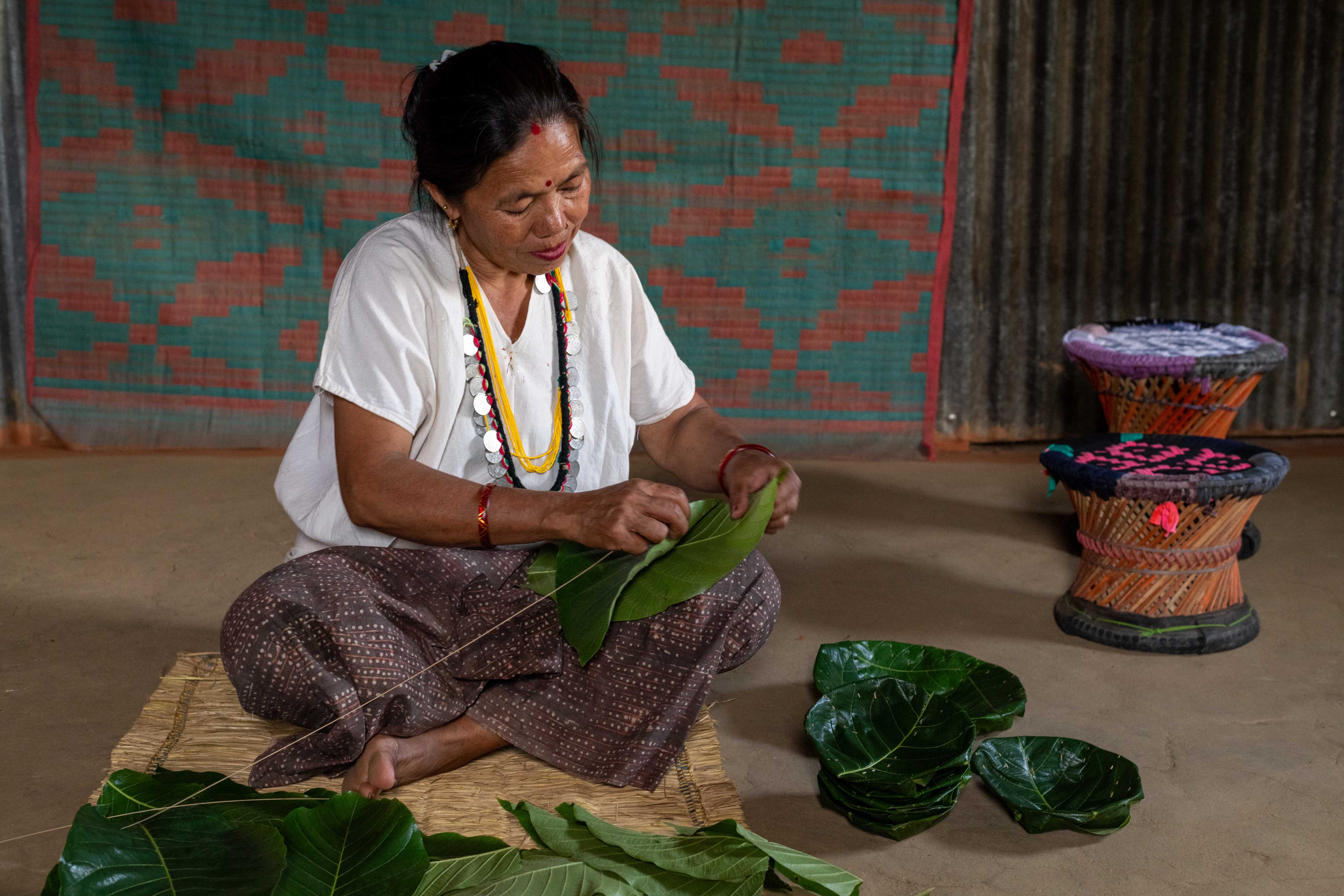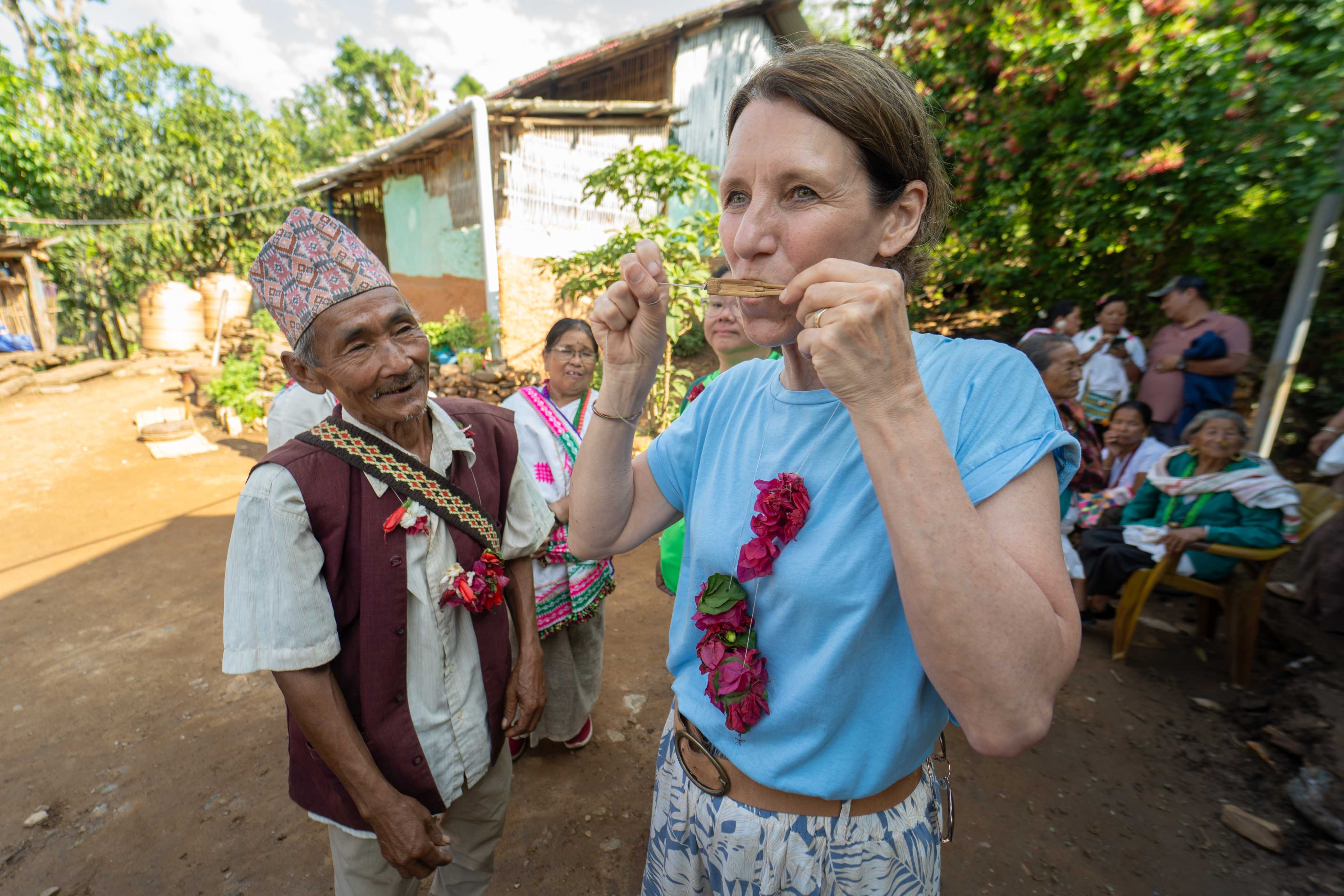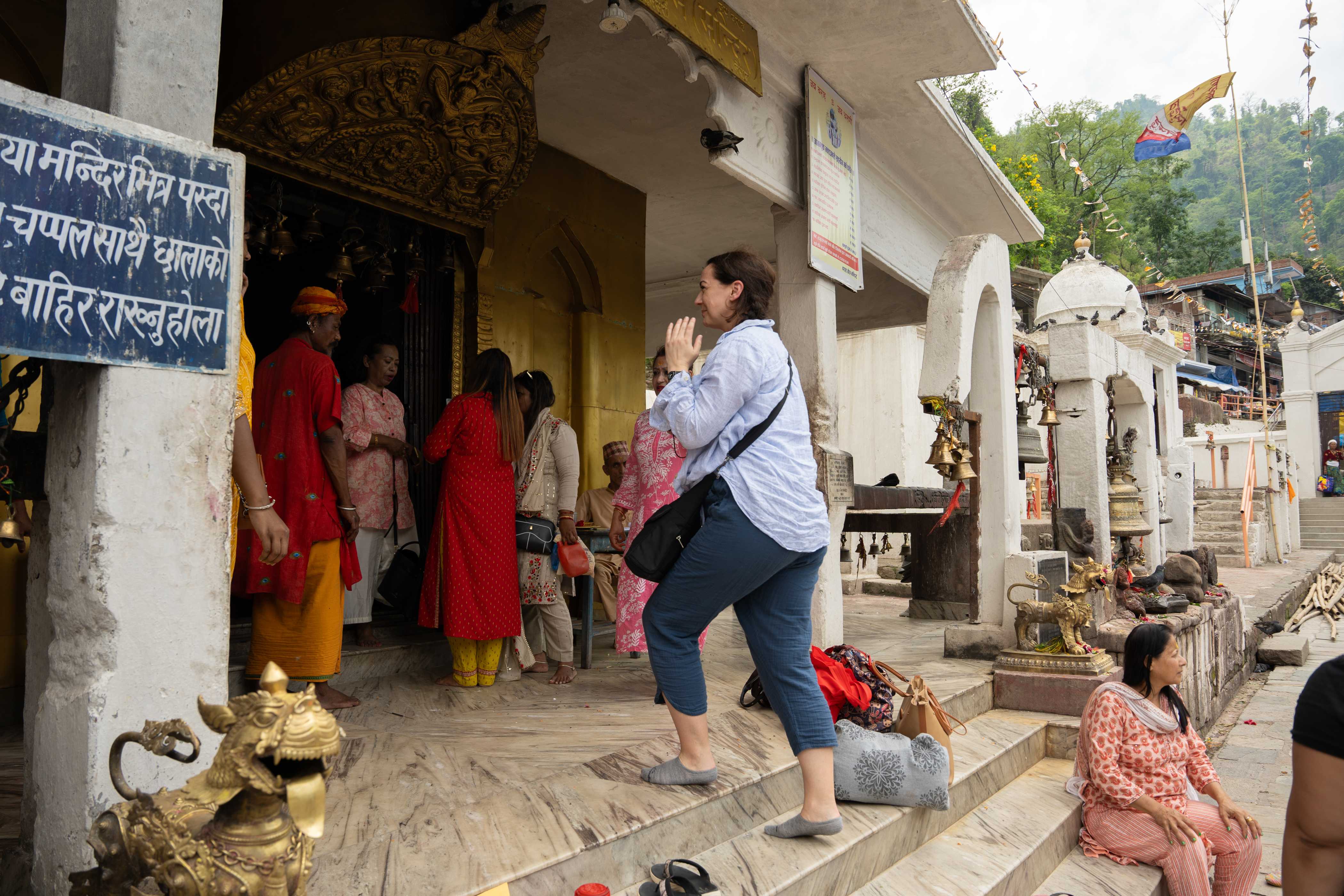Aathphariya and Mangshire
In the eastern hilly district of Nepal, Dhankuta is home to various castes, among which the Aathpahariya stands out. This caste maintains distinct geographical boundaries, culture, traditions, languages, values, and a unique cultural identity. Although often grouped with the Rai subcaste of the Kirant family, the Aathpahariya assert that they are a separate entity with no direct ties to the Rai community.
The term "Aathpahariya" is not native to this caste. Popular opinion suggests that the title was conferred upon bodyguards who stayed with the king twenty-four hours a day ("aath pahar" means "eight watches" or "all day" in Nepali). This title was supposedly given during the reign of the king of Nepal, recognizing their unwavering service and loyalty.
According to local legends, the community earned its name when Prithivi Narayan Shah, impressed by their dedication and guardsmanship, awarded them the title of Aathpahariya.

Different writers, scholars, and local public opinions offer various perspectives on the origins and history of the Aathpahariya caste. However, a comprehensive study of this community is still needed to fully understand its rich heritage and historical significance.
The Aathpahariya community resides exclusively in Dhankuta, Nepal. According to Mundhum, the ancient religious scripture and folk literature of the Kirant, the community's geographical boundaries are defined by four forts: East Tankhuwa River, West Fonsua River, North Margapokhari and Guransa Danda, and South Tamor River. This area represents the core of the Aathpahariya's historical territory.
Interestingly, the community follows a traditional path from Jhalhara to Barahkshetra for their Pitri shraddha (ancestral rites). This practice suggests that the Aathpahariya once occupied a larger area in ancient times, extending their cultural and religious influence beyond the current geographical confines.
Caste system
The Aathpahariya community places great importance on their place of origin, which plays a significant role in the division of sub-castes within the group. The community is divided into two main categories: those who are original to the place and those who have migrated. According to their belief, their sub-castes originated from the caves and soils of that place are Khambongwa. The sub-castes of Mangbung, Pangsung, Homvarak, Chara, Phokim, and Khawaduk fall under the Khambongwa category, signifying their ancestors' early settlement and forest clearing in the region. These individuals refer to themselves as "bhuifutta" or "jimdar/jimdarni" and conduct purification ceremonies to incorporate people from other castes, who are then called "thambongwa." Sub-castes such as Chitlinge, Kimdang, Chongden, Charingme, Roduwa, and Lengsuwa belong to the Thambongwa category. The people of this sub-caste maintain close relations with other ethnic groups such as Limbu, Yakkha, Rai, Katuwal, Dhimal, Tharu, and Thakuri.

Tututumyang is authorized purifier person who removes harmful substances from a man/woman who join in the Athapahariya Rais in a particular time and place. Meanwhile, the members of Mujulumba (an Athapahariya village council) namely Pujari or Yaba are legitimated to decide the times and materials for purification. They used traditional herbs, stone (Dubo-Dhungo) and Mantra (Tututumyang-Tumbali) to assist in purification in the place of Mangthanama (Jeemee/ Marga divinity). The members of Athapahariya, who join in this group to give his time, effort and love themselves, they believed that more resources are to be devoted to nature to earn their livelihood. This study found that both Khambongba and Thangbongba who belong to Athapahariyas are members to take part in a particular activity, either in Marga/Jeemee Puja or in the socio-cultural rituals.
Cultural Significance
Within the Aathpahariya caste, the dhuri of the house (dhuri), the original pillar (mul khanbo), and the chulho (hearth) hold immense cultural significance. These items are strictly forbidden to be touched by members of other castes. If someone accidentally touches them, they must pay a penalty equivalent to the cost of materials needed for purification. Traditionally, the chulho is built using three stones named Bahun (west), Bhote (north), and Khambongwa (south), reflecting the community's deep cultural roots.
While the Aathpahariya Rai share physical similarities with other ethnic groups, their unique customs, clothing, language, and behavior set them apart. Men typically wear daura suruwal, ishtkot, topi, and kattu, while women adorn themselves with saris, cholos, coin necklaces, and head veils. Historically, both men and women wore Khandi clothes, and even today, Aathpahariya women can be seen wearing hand-embroidered shawls and naturally dyed lungis. However, the convenience of modern clothing has led to the adoption of contemporary attire by many community members.

The Aathpahariya Rai have their own native language, known as Aathpahariya. This language belongs to the Tibeto-Burman language family and is closely related to Belhare, Chhatyel, Limbu, and Yakkha languages. Within their community, they primarily communicate in their mother tongue, while Nepali is used for interactions outside the community.
The Aathpahariya are also known for their rich cultural expressions through folk songs and dances. They sing in various dialects, including Chembado, Sachchoro, Chhiwak, and Chhiwak Chamlom, and perform dances like Khyale, Haiyari, Gothale, and Jhyaure. The Dhol dance and Maruni dance are particularly popular, showcasing their vibrant cultural heritage.
Belief and Religion
The Aathpahariya community are ardent nature worshippers. Their spiritual beliefs encompass gods, ghosts, and witches, with a firm conviction in the impact of these entities on their daily lives. To navigate these influences, they rely on the wisdom and rituals performed by their priests and bellmen. The priest, a highly respected figure within the community, hails from the Mangbung tribe and inherits his role through a lineage passed down from grandfather to son and grandson.
The Aathpahariyas celebrate three major festivals, each reflecting their reverence for nature. Their rituals address human, animal, and crop health, protection from drought, cowshed worship, Marga puja, and prayers for rainfall. These practices underscore their belief that nature, which provides food, clothing, and medicinal herbs, is a divine blessing. They regard nature as a sacred gift from the gods, integral to their survival and well-being.

The community’s festivals and rituals highlight their connection to their ancestors and nature. They often gather within the house perimeter to celebrate various festivals and occasions, demonstrating their deep respect for ancestral traditions. Key deities in their spiritual practices include Marga/Jimi, Tinkille, and Thani. These shrines, central to their worship, are designated based on family surnames, historical background, area of residence, and ancient geographical boundaries. Festivals see the community congregating at these shrines, reinforcing their cultural and spiritual bonds.
According to their religious beliefs, the Aathpahariya community worships at devsthals, which are sacred sites. There are generally four types of devsthals: Marga Than, Jimmi Than, Thani ko Than, and Asthayi Than. Among these, Marga Than holds special significance. Marga Than are typically located at high elevations and do not contain idols, only a trishul (trident). Animal sacrifice is prohibited at these sites. Offerings made at the shrine must be consumed on-site and cannot be taken back to the house.
Traditional Organizations
The role of the caste chief in the Aathpahariya community is fulfilled by the Subba. To ensure justice and public welfare, the Khambongwa Aathpahariyas brought a person from the Chitlinge caste from Vijaypur and appointed him as Subba. The Aathpahariya community holds special honor for both the Subba and the Priest. The Subba belongs to the Chitlinge caste, while the Priest is from the Mangbung caste. The presence of both the Subba and the Priest is considered mandatory at any social or religious function.
Festivals
In Athpahariya culture, several festivals hold significant importance, one of them is Chamnugi. Celebrated during the month of Bhadra in the Nepali calendar, Chamnugi revolves around bringing new items into homes, particularly harvested corn, after offering them to ancestors. During this festival, rituals involve worshiping ancestors and the main deity, offering alcohol, flowers, garlic, and pork at the household's main hearth, known as chulho.
Another prominent festival is Omdak, observed during Buddha Purnima and spanning a week. It is believed to enhance farming prosperity.
Mangshire or Wadangmet
Environment, nature and ancestors have a prominent place in the nature-worshiping Kirat community. Water, forest, land, fire, ancestors, mountains, mountains, lakes, rivers, borders, etc. are worshiped rather than any particular god. The culture, society and lifestyle of Athapaharia and other nature worshiping communities of Dhankuta are directly connected with nature. Among many festivals celebrated by the Aathpahariya Community, Wadangmet festival is a special celebration which covers both stages of birth and death and is associated with water and earth. Wadangmet holds a central place in the customs of local Athpahariyas, commencing from Kartik Purnima and extending until Aunsi.
Wandangmet is yet another significant festival, dedicated to deceased relatives. Athpahariya families undertake a three-day journey to Barahakshetra to bathe in the Kokaha River, shave their heads and beards, and worship Baraha. This ritual marks the end of a year-long mourning period. On the fourth day they return back to their home continuing the celebration with dance and music like Dhol, Maruni, and Dallo Naach. During their stay at Barahakshetra, they sing Mundhum, a sacred hymn which is restricted to be sung on other occasions.

Following the year-long mourning period on the banks of the Baraha temple, the festival continues with the batti fukaune ritual in the community. Batti fukaune is the final ritual of Wadangment, believed to bring happiness and prosperity to households with the blessing of divine Baraha.
The batti fukaune process starts with the thuloghar and subba ghar before other community members begin their rituals. During the batti fukaune, the Baraha god is symbolically brought to Dhankuta through Baraha Kshetra, Kokaha Khola, Tamor, and Simlebaas, accompanied by songs from Mundhum, Dholnaach, and other musical instruments. Those who went to relieve their mourning in Barahakshetra have pledged to perform Dholnaach, Maruni, and batti fukaune for the god of Baraha. Dholnaach is performed outside, while batti fukaune is conducted inside the house. The language used in Dholnaach is distinct from the Athapaharia language and is known only to devotees.
Batti Fukaune process involves offering topi (cap) of the household owner, batti (light), fulpati acheta (rice, vermillion powder, flowers) and dastur (customary fee) and bhaktiwala performs the Mundhum and offers the blessings. Batti fukaune is essential for every Aathpahariya household as it is considered the blessing of the Baraha god. During Wandangmet, the area is divided based on the marga (shrine) they worship, and the team moves from cluster to cluster to complete the batti fukaune before the full moon or purnima in every household.
After the batti fukaune and dance, the Maruni dance begins, led by a male dancer dressed as a female, with singers and musicians performing. During the Maruni dance, some musicians playing madal may start shaking, believed to be a sign of divine touch. Maruni dance adds vibrancy to the environment of the festival with the beats of Madal, eastern Nepal folk tune and the steps of the lead Maruni dancer.
Wandangmet or Mangshire also celebrates the addition of new family members through birth. Harka Badhai is a joyous celebration for the families who have their first male child throughout the year, who is expected to carry forward the family legacy.
Famous Wadangmet festival delicacies include buffalo meat, ash gourd (kubhindo), and niger seed pickle.





